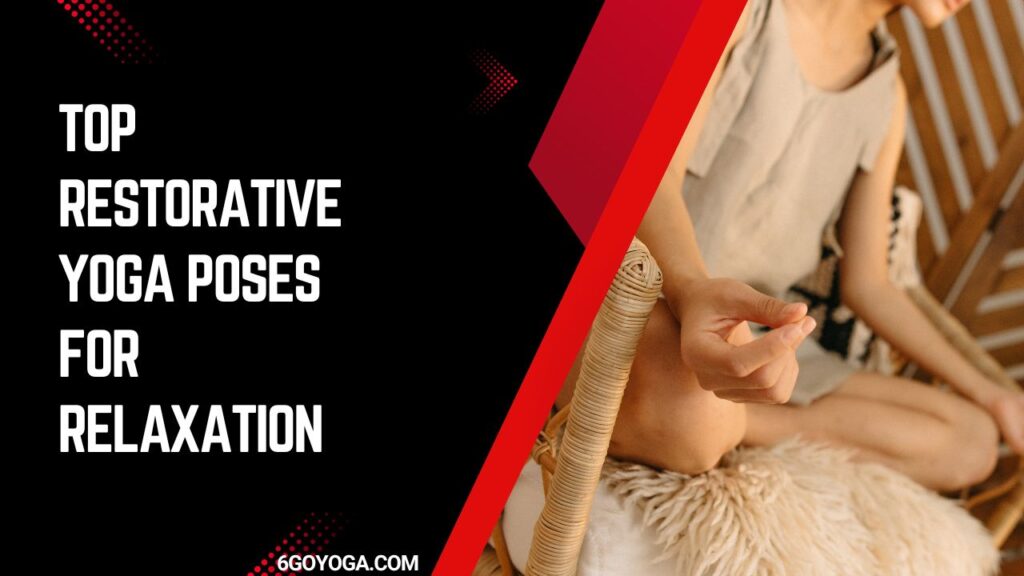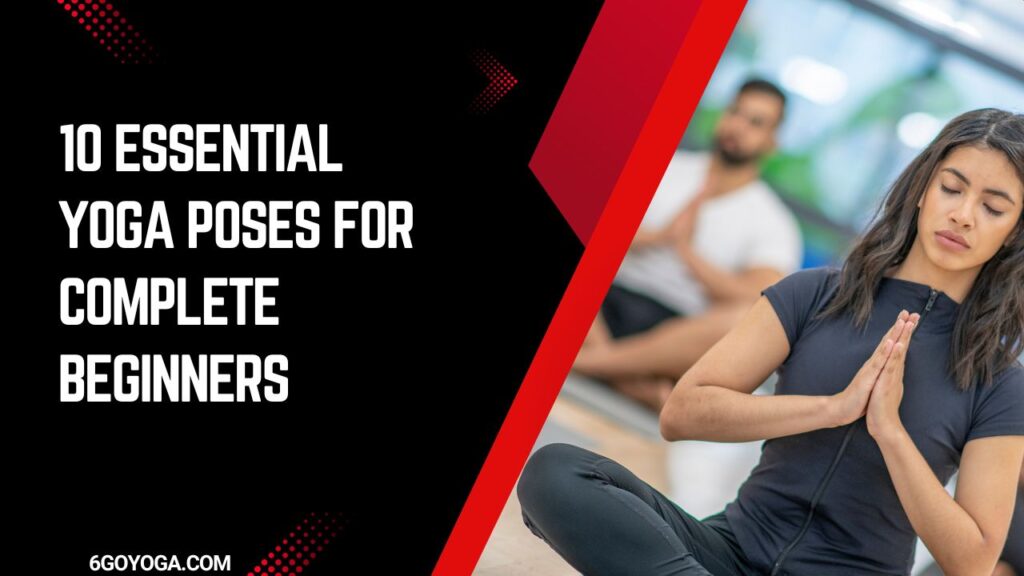Restorative yoga is a gentle and calming practice focused on deep relaxation, stillness, and mindfulness. Unlike more dynamic forms of yoga, restorative yoga involves holding poses for extended periods, allowing the body to relax completely. Props like bolsters, blankets, and blocks are often used to provide support and comfort.
In this post, we explore restorative yoga poses, designed to promote deep relaxation and healing. Discover gentle, supported poses that help release tension, reduce stress, and restore balance to the mind and body.
Key Aspects of Restorative Yoga
| Aspect | Details |
|---|---|
| Focus | Relaxation and stress relief |
| Duration | Poses held for 5–20 minutes |
| Equipment | Props such as bolsters, blankets, blocks |
Restorative yoga helps reduce stress, improve sleep, and promote overall well-being.
Quote: “Restorative yoga invites you to slow down and reconnect with your inner calm.” – Certified Yoga Instructor
Benefits of Restorative Yoga
Restorative yoga offers numerous physical and mental health benefits. Its emphasis on relaxation and mindfulness makes it suitable for all fitness levels, including beginners.
Benefits of Restorative Yoga
| Benefit | Explanation |
|---|---|
| Stress Reduction | Activates the parasympathetic nervous system |
| Improved Sleep | Encourages relaxation before bedtime |
| Enhanced Flexibility | Promotes gentle stretching and joint mobility |
Scientific studies have shown that regular restorative yoga can lower cortisol levels and reduce symptoms of anxiety and depression.
Quote: “The restorative poses act like a reset button for your body and mind.” – Yoga Enthusiast
Key Features of Restorative Yoga
Focus on Relaxation and Mindfulness
Restorative yoga emphasizes slowing down and being present in the moment. Unlike power yoga or vinyasa flow, this style prioritizes relaxation over exertion, helping practitioners achieve a deep state of rest.
Comparison: Restorative Yoga vs. Active Yoga
| Feature | Restorative Yoga | Active Yoga |
|---|---|---|
| Focus | Relaxation and stillness | Strength and flexibility |
| Intensity | Low | Moderate to high |
| Primary Goal | Stress relief and mindfulness | Physical fitness |
Mindfulness in restorative yoga enhances mental clarity, reduces overthinking, and promotes inner peace.
Quote: “Mindfulness in restorative yoga is not just a practice—it’s a way of life.” – Experienced Yogi
Use of Props in Restorative Yoga
Props are an essential component of restorative yoga, as they provide support and enable the body to relax completely in each pose. Common props include bolsters, blocks, straps, and blankets.
Common Props and Their Uses
| Prop | Purpose |
|---|---|
| Bolster | Provides support for reclining poses |
| Blanket | Adds warmth and cushioning |
| Block | Helps modify poses for comfort |
| Strap | Assists with gentle stretches |
Props make restorative yoga accessible to individuals of all fitness levels, allowing them to experience the full benefits of each pose.
Quote: “Props transform restorative yoga into a deeply nourishing experience.” – Yoga Teacher
Essential Restorative Yoga Poses
Child’s Pose (Balasana)
Child’s Pose is a foundational restorative yoga pose that promotes relaxation and gently stretches the back, hips, and thighs. It’s ideal for calming the mind and relieving tension.
How to Perform
| Step | Instruction |
|---|---|
| Starting Position | Kneel on the mat, sit back on your heels |
| Forward Stretch | Lower your chest to your thighs and extend arms forward |
| Use of Props | Place a bolster under the chest for added support |
Holding this pose for several minutes helps activate the parasympathetic nervous system, promoting deep relaxation.
Quote: “In Child’s Pose, we find the stillness that restores our energy.” – Certified Yoga Instructor
Supported Bridge Pose
This pose opens up the chest and stretches the spine while allowing the body to relax fully. It’s particularly effective for improving posture and relieving lower back pain.
How to Perform
| Step | Instruction |
|---|---|
| Starting Position | Lie on your back with knees bent and feet flat on the floor |
| Lifting the Hips | Place a block or bolster under your sacrum for support |
| Relaxation | Let your upper body and arms rest naturally |
Supported Bridge Pose encourages spinal alignment and reduces stress on the lower back.
Quote: “Bridge Pose connects the body and mind, creating harmony through support.” – Yoga Practitioner
Reclining Bound Angle Pose
This deeply restorative pose opens the hips and chest, promoting relaxation and stress relief. It’s particularly beneficial for improving circulation and calming the nervous system.
How to Perform
| Step | Instruction |
|---|---|
| Starting Position | Lie on your back with knees bent |
| Open the Hips | Allow knees to fall outward, forming a diamond shape with your legs |
| Support with Props | Place bolsters or blocks under knees for comfort |
This pose is ideal for meditation or unwinding after a long day.
Quote: “Reclining Bound Angle Pose is the ultimate act of surrender to peace.” – Yoga Teacher
Intermediate Restorative Yoga Poses
Legs-Up-The-Wall Pose
This simple yet effective pose improves circulation, reduces swelling in the legs, and calms the mind.
Benefits
| Aspect | Impact |
|---|---|
| Circulation | Encourages blood flow to the upper body |
| Relaxation | Relieves tension in the lower back and legs |
Restorative Twist
This pose releases tension in the spine and promotes relaxation in the abdominal region.
Key Tips
| Use Props | Bolsters or blankets under knees for support |
| Hold Time | 5–10 minutes on each side |
Supported Forward Fold
This pose gently stretches the hamstrings and lower back while allowing for complete relaxation.
Props Usage
| Block Positioning | Place under the forehead for comfort |
| Bolster Usage | Supports chest to reduce strain |
Advanced Restorative Yoga Poses
Restorative Fish Pose
This pose opens the chest and improves breathing capacity, making it ideal for reducing stress.
Reclined Hero Pose
Stretches the thighs and hips while promoting deep relaxation.
Supported Headstand
An advanced pose requiring caution, offering inversion benefits for circulation and focus.
Recommended Props for Restorative Yoga
Yoga Blocks and Bolsters
Blocks and bolsters are essential for supporting various poses, making them more comfortable and accessible. These props help practitioners maintain correct posture without strain, enhancing the restorative benefits of yoga.
Usage of Props
| Prop | Purpose |
|---|---|
| Yoga Block | Provides stability and modifies poses |
| Bolster | Offers support for reclining poses |
Props are especially helpful for beginners and those with physical limitations.
Quote: “The right props transform restorative yoga into a truly supportive practice.” – Yoga Instructor
Blankets and Straps
Blankets provide warmth and cushioning, while straps assist in achieving stretches without strain. Together, they enhance comfort and accessibility in various poses.
Benefits of Using Blankets and Straps
| Prop | Benefit |
|---|---|
| Blanket | Adds warmth and supports joints |
| Strap | Helps with deep stretches and alignment |
Incorporating these props ensures a safe and relaxing yoga experience.
Quote: “Simple props like blankets and straps make yoga inclusive for everyone.” – Yoga Enthusiast
Restorative Yoga for Specific Needs
Stress Relief and Anxiety Management
Restorative yoga is highly effective in reducing stress and managing anxiety. Poses that focus on deep relaxation and mindful breathing activate the parasympathetic nervous system, promoting calmness.
Key Poses for Stress Relief
| Pose | Effect |
|---|---|
| Legs-Up-The-Wall | Reduces fatigue and improves circulation |
| Child’s Pose | Calms the mind and relieves tension |
Restorative yoga offers a holistic approach to mental well-being.
Quote: “Restorative yoga is a gentle antidote to life’s stresses.” – Mental Health Advocate
Improving Sleep Quality
Practicing restorative yoga before bedtime helps prepare the body and mind for restful sleep. Gentle poses and deep breathing techniques promote relaxation and reduce insomnia symptoms.
Tips for Better Sleep
| Tip | Benefit |
|---|---|
| Evening Practice | Relaxes the body and calms the mind |
| Focus on Breathwork | Encourages a restful state |
Regular restorative yoga can improve both sleep duration and quality.
Quote: “A few restorative poses at night can lead to a peaceful morning.” – Yoga Practitioner
Conclusion
Summary of Benefits and Encouragement
Restorative yoga is a gentle yet powerful practice that provides numerous physical, mental, and emotional benefits. Whether you’re seeking relaxation, better sleep, or stress relief, restorative yoga offers a path to greater well-being. With the use of props and mindful poses, it’s accessible to everyone, regardless of fitness level.
Quote: “In the stillness of restorative yoga, we find the strength to restore ourselves.” – Yoga Teacher
FAQs
- How often should I practice restorative yoga?
Practicing 2–3 times a week is ideal for beginners, but even a single session can bring noticeable benefits. - What props do I need for restorative yoga?
Essential props include yoga blocks, bolsters, blankets, and straps. - Is restorative yoga suitable for beginners?
Yes, restorative yoga is beginner-friendly and can be easily adapted to individual needs. - Can restorative yoga help with chronic pain?
Yes, it can relieve chronic pain by reducing muscle tension and promoting relaxation. - What’s the difference between restorative yoga and yin yoga?
Restorative yoga focuses on relaxation with props, while yin yoga emphasizes deep stretching without support.


